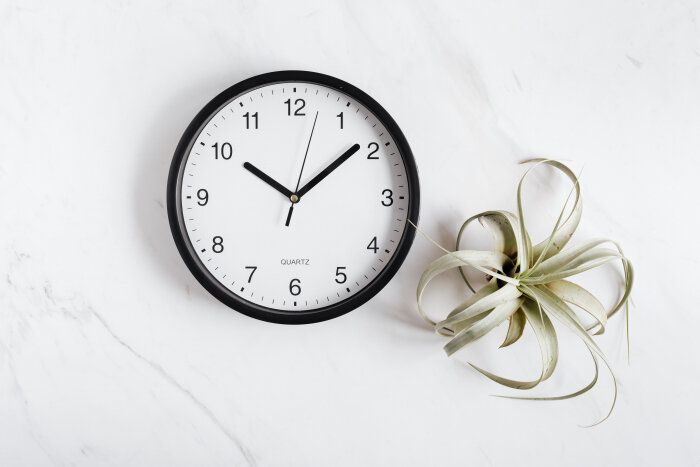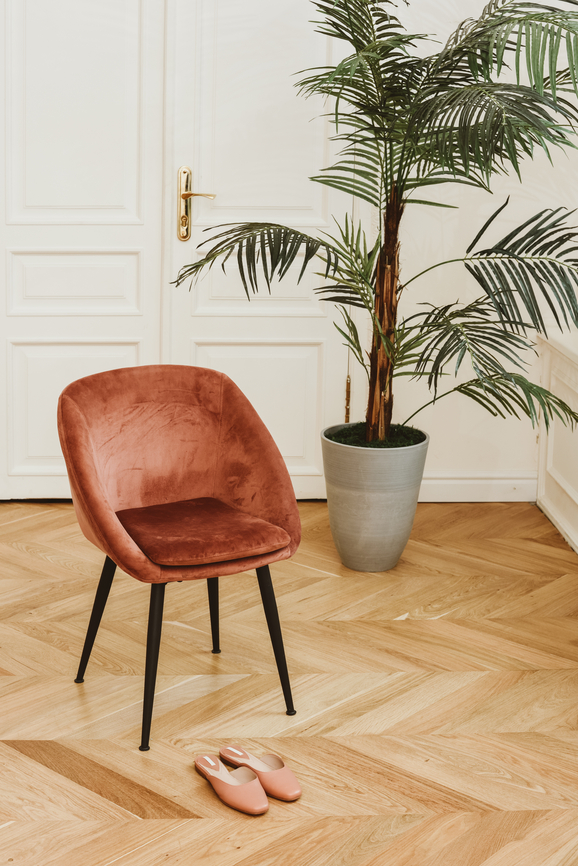How to Evaluate Your Current Marketing Strategy

If you’ve already started or will start planning for next year, you’re probably wondering how and where to invest your precious marketing dollars. Should you ramp up what you’ve been doing? Should you try something new?
In addition to defining your goals (you can’t choose the right lane if you don’t know where you’re going), I highly suggest evaluating what is and isn’t working with your existing marketing strategy. This means diving into the analytics, looking at the strong and weak points in your process, and being able to say, “Yes, this is working for my business.” Here’s how…
Evaluate Your Marketing in Stages
When running a marketing diagnostic, I suggest breaking it into the stages that your clients experience. Start with their points of discovery (where a potential client would find you) and follow their path toward eventually working with you.
Stage 1: Discovery
- Social Media (Instagram, Pinterest, Facebook, LinkedIn)
- Houzz
- Google search results
- Referrals
Stage 2: Initial Contact
- Website Copy
- Blog Posts
- Lead Magnet
Stage 3: Nurturing the Relationship
- Blog Posts
- Nurture Sequence
- Monthly Newsletters
Stage 4: Converting to Clients
- Booking & Services Packet
- Proposal
Let’s dive into each of these.

Stage 1: Discovery
First, how are clients finding you? When speaking with designers, I’ve found that most report getting new clients through one or more of these channels:
- Social Media (Instagram, Pinterest, Facebook, LinkedIn)
- Houzz
- Google search results
- Referrals
If you aren’t sure how new clients are finding you, this is something you need to become aware of as soon as possible. This information is essential to the health of your business. I HIGHLY recommend you add a required “How did you hear about us?” question to your intake form.
Another method of investigation (though slightly less reliable) is to look at the sources of your website traffic. Most analytics dashboards (Squarespace, Google Analytics) can show you how much traffic originates from specific social media platforms or other referral sources. You can also see which search terms are resulting in traffic from Google.
That said, I know a lot of designers who get most of their work through word-of-mouth referrals. There is no metric in your website analytics that can show you this… which is precisely why the “How did you hear about us?” question is so important.
Now that you have a sense for where your clients come from, you can look at those sources individually to see what is and isn’t working.
Social Media & Houzz
For social media platforms and Houzz, you’ll want to look at the numbers for profile visits and website traffic first and foremost. For 90% of designers, it genuinely does not matter if you have a zillion followers. If those followers are not your potential clients and never make it to your website, they are not supporting your bottom line.
Ideally, an increase in website traffic is a good thing, but it’s more important that your ideal client makes it to the website. An uptick in traffic without an uptick in inquiries could mean that 1) they’re not the right person, or 2) your website copy isn’t converting well. (For copywriting services, see here.)
Google Search Results / SEO
Looking at your Google Search Analytics can be quite insightful. There are 3 metrics I suggest investigating:
- whether your site traffic is increasing over time
- the terms people are typing in to find your business
- which of your blog content is getting the highest traffic
Again, numbers don’t necessarily matter here. It is far more important that more of the RIGHT people are finding you. If your popular search terms and content are DIY-related and never going to get you full-service clients, this might tell you that you need to publish content more targeted to the people you do want to work with.
Note: I have had several clients tell me that their blog posts “took off” in Google search results, getting hundreds or thousands of views… never fails, it was always approximately 1 YEAR after the blog posts were published. SEO takes time, my friend. Pinterest helps with this, too.
Referrals
If your main source of business is through referrals (from other businesses), you will only be able to measure this if they have your site linked on theirs. It is also difficult to increase this number directly, since it’s not your community of people, but increasing your visibility within other communities should help this number go up.

Stage 2: Initial Contact
Although a potential client’s first impression of your business may be coming from outside sources, like Pinterest, their first connection point with you usually happens on your website. In fact, one of your main goals on social media platforms should be to encourage new potential clients to visit your website. It is the domain you own, and no algorithm can take that away from you.
So, they’re on your website. What do they see?
- Website design, photography & copy
- Blog posts
- Lead magnet, as a pop-up and embedded on the pages
Website Design
Your website design should be professional, up-to-date, on-brand, and inviting. It should include professionally photographed projects and brand photography of you (yes, YOU) doing what you do best. It should provide an intentional user experience that potential clients can easily navigate.
This one is difficult to judge with analytics. Typically, a high bounce rate isn’t ideal, but you can’t really assume that a high bounce rate means your website design is poor. You could just be attracting the wrong site visitors for an entirely different reason. If you’re concerned about your website design’s effectiveness, I suggest speaking with your website designer about it.
Website Copy
Your website copy is ESSENTIAL to your success. It should speak to your ideal clients, show that you understand them, and help them know, like, and trust you. I see many designers’ websites that are missing a huge opportunity here—because they ALL sound the same! If you’re saying “we design for your lifestyle,” even if it’s true, I highly encourage you to find a more creative way to either express the same thing or stand out for something else. (This is part of our brand messaging process, if you’re curious to see how this is done.)
Blog Posts
In addition to helping improve SEO, blogging is a great long-term marketing strategy. (See here for all of the benefits of blogging.) It takes time to see success, but done well and consistently, it can offer a wealth of new business for your design firm.
However, it’s also important to note that blogging should not be a standalone strategy. Yes, blog posts will help SEO over time, but to see greater success, you must share them on your social media platforms and link them in newsletters. Get them in front of as many people as possible!
I also know several designers (and I’ve done this, too) who share blog posts as part of their onboarding process. This not only helps get new clients quickly up-to-speed but increases traffic to those blog posts… which also boosts SEO over time.
So, given time and a thoughtful strategy, how can you judge the success of your blog?
- Is your website traffic increasing steadily over time?
- Are there blog posts listed among your most viewed pages in Google Analytics? (Remember, this may take some time.)
- Are your social media followers clicking on blog-related content and going to your website?
- Are lead magnet downloads and newsletter subscribers increasing over time?
- Have new, current, or past clients mentioned your blog posts in conversation?
- Has anyone ever told you they decided to hire you because of a blog post?
If you can answer yes to any or all of these questions, your blog has become a working arm of your business. And I can tell you from experience, it feels awesome.
Lead Magnets
A lead magnet is a free resource that you offer on your website and deliver by email. It is a way to show your potential clients that you understand them, have value to offer them, and of course, it helps build your mailing list. Here are some ideas for lead magnet topics in the interior design industry.
As far as visibility goes, I suggest embedding your lead magnet on your homepage (at/near the bottom), within every blog post, and linking it in your social media profiles. I also suggest having your lead magnet as a website pop-up. Did a horrified look just cross your face? Yes, I know pop-ups suck, but they get results. Plus, I have never clicked off a website I wanted to visit because of one pop-up. I bet you haven’t either.
So, how do you know your lead magnet is working?
- Do people consistently download your lead magnet? If not, the topic might not be desirable enough, OR you might not be sharing your lead magnet in enough places.
- Is your mailing list growing over time?
- Are your newsletters getting opened? (If not, your lead may have attracted the wrong people OR you need better email subject lines.)
Which brings us to our next stage…

Stage 3: Nurturing the Relationship
In most cases, someone who discovers you is not ready to book your services right away. I’ve found that it can take anywhere from 3 months to a year or more for a lead to be ready to take the next step, and that’s okay.
In the meantime, we should be “nurturing the relationship” like a little sapling we want to grow. This means staying in touch, being generous, and making yourself available. There are a few ways to do this:
- Nurture Sequence
- Blog Posts
- Monthly Newsletters
Nurture Sequence
A nurture sequence is a series of value-driven emails that a new or existing mailing list subscriber receives in a particular order. The goal of a nurture sequence is to deepen the connection with your potential client, share a bit about yourself, and eventually transition this person to a paying client if your service is right for them.
This blog post shows you how to plan and write a nurture sequence for your design firm. Once set up and running for a while, here’s what you should look at to judge effectiveness:
- Was Email 1 opened and the lead magnet downloaded?
- Did Emails 2-4 see decent open rates? (Above 30%)
- Did Emails 2-4 get clicked? (10% or higher is good, natural to decrease with each email.)
If open rates are low, you should consider rewriting the email subject lines. If click rates are really low, it’s possible that another resource would be better in place of the one you have. Swap it out and see if results change.
Lastly, there is another way to judge if your nurture sequence (and email marketing strategy) is working, but you have to wait until they have been running in the background for 6-12 months. If that’s the case, think back to the last few clients who hired you. Go into your email platform, search for their names, and see which content they received and engaged with.
I did this little experiment myself recently for 2 clients. They were both what I would call my “dream clients” and they were such a joy to work with. So I poked around my Flodesk analytics, and I was thrilled to see that they both downloaded my lead magnets, opened more than 80% of my emails over the last 6-12 months, and actively engaged with the content I shared with them. That’s what it looks like when things are working.
Blog Posts
I know we already talked about blog posts, so I will just say that sharing your blog posts with the people who are already in your community is important to building your relationship with them.
Several designers have told me they booked new projects after emailing out a blog post we created together. The same has happened to me, too. (Just don’t copy/paste the whole post into the newsletter. Share a brief snippet with a link to read more.)
As far as effectiveness goes, refer to the above list. Same metrics apply.
Newsletters
I know I just mentioned including a snippet of your blog post with a link in your newsletters, and I stand by that, BUT it’s also important to note that your monthly newsletters are at the tail-end of your marketing funnel.
This means that by the time your potential clients are seeing a newsletter, they have likely already experienced your social media presence, learned a bit about you, seen your website, received your lead magnet, and probably read some blog posts.
At this point, they are far more likely to be ready to hire you than they were when they first stumbled across your Pinterest account.
For that reason, you absolutely want your monthly newsletters to keep providing them valuable information (like tips or a blog post) and to OPEN THE DOOR to working with you. Yes, that’s right, directly invite them to work with you.
So, assuming you’re doing this, how do you know if it’s working? Well, it’s almost identical to the metrics I suggested looking at for your nurture sequence:
Are your newsletter open rates high?
If not, make them more compelling. If that still doesn’t work, consider deleting people who have been on your list longer than 12 months and who have never opened an email. They are dragging your numbers down and are likely not your ideal client!
Here are some rough guidelines for open rates:
- 30% or higher for a list up to 500
- 15-29% for a list 500-1,000
- 10-15% for a list over 1,000
Are people clicking your links? And the BIG question: Are you booking discovery calls??

Stage 4: Converting to Clients
I think most people would not consider the following items marketing, but they absolutely are:
- Inquiry / Services Packet
- Discovery Call & Proposal
Inquiry / Services Packet
When a client books a discovery call with you, it is a prime opportunity to help them get to know your business and services better, before you ever even hop on the call.
In the past, I’ve used this pre-call time to share a Services Packet, which is an overview of the services O&B offers, some starting pricing, and our processes. (Now, it’s on our website for full transparency.) This not only allows potential clients to prepare any questions but has made my discovery calls faster and easier!
I work with several interior designers who have recently implemented this practice, and they have expressed the same feelings — relief, happiness, ease, and more potential clients becoming actual clients. Make it EASY for them to learn about working with you.
Signs that it’s working: Are your discovery calls easier? Do potential clients sound more informed and prepared to work with you? Do you find that you aren’t having to “sell” so much on the phone? (Also, this podcast episode and this one really helped me boost my confidence on the phone.)
Those are all signs that your process and marketing collateral are working.
Proposal
The last step before your new client signs the dotted line is your proposal. I can’t tell you exactly what to put in this — it varies by designer, project, etc. — but it should be highly professional and consistent with your brand (the copy and visuals) to build trust.
If a potential client has made it this far and doesn’t accept the proposal, try to see if you can find out why. They may not have been the right fit, or there may be something you can improve in your copy or messaging.

Okay, wow. If you made it this far, cheers to you, my friend. This is easily the longest blog post I have ever written, but it is SO packed with important information that I couldn’t stop myself. I hope you bookmark this post and come back to it again and again as you try new things in your marketing, refine your processes, and grow your design firm.
If you have any questions along the way or are looking for copywriting support, let’s talk. This is what we love, and we can’t wait to help you grow a business that lets you do more of what YOU love.
Cheers,
Jaquilyn
WATCH the masterclass
WORKBOOKS & DOWNLOADS
A-to-Z LIST OF LUXURY WORDS
GUIDE TO BRAND MESSAGING
START BLOGGING FOR SEO
Printable Workbook
Our Go-To Lexicon!
Guide + Checklist